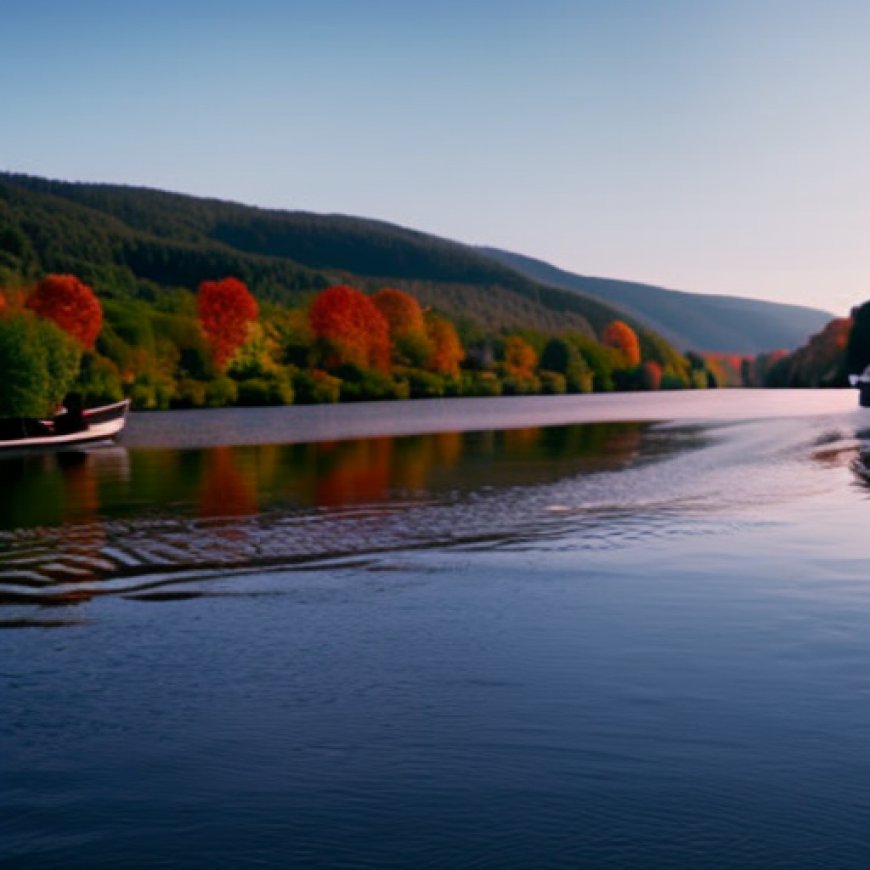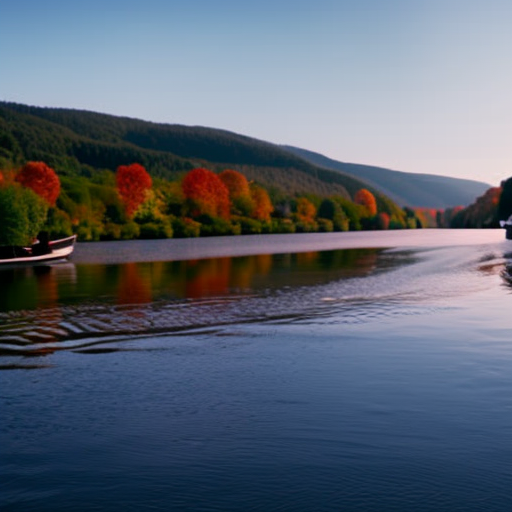Opinion: The fate of a river in Warner
Opinion: The fate of a river in Warner Concord Monitor


The Warner River and the Sustainable Development Goals
Introduction
Artist, naturalist, and writer David M. Carroll lives in Warner.
The Importance of the Warner River
As it has long come to be for any places with wildness, natural wildness with rich and complex ecosystems and biological diversity, the fate of the Warner River and its ecologically and esthetically exemplary riverine and riparian corridor, rests in human hands.
Global Responsibility
This is, of course, the global operative, with places of true natural landscape integrity and respect essentially remaining in the keeping of indigenous peoples. And these people and their holdings are themselves under unceasing pressures for exploitation, development, and vast transformation to serve recreation.
The Impact of Rail Trails
In very short order, the rail trail would undo the millennium of evolutionary workings that began as the last glacier retreated, to co-evolution that has resulted in the river we know today. A balance of complexity beyond human comprehension becomes unbalanced by such manipulations.
Preservation of Natural Resources
Over that ten thousand years the original people, now displaced, replaced, did not take one thread of running water, from the enormous and intricate tapestry of Earth’s global ecosystem.
Ecosystem Preservation
The riverine, wetland, and upland habitat mosaic of the Warner — yet largely in its natural state — currently serves exemplary ecosystems and their abundant native flora and fauna, an increasingly diminished, to rare, biological diversity.
Protecting Endangered Species
It is of great note that the river, its floodplains, vernal pools and other wetland niches protect and provide — cover, food, raising young — for all species, which is especially critical for those in decline, and a number of them threatened with extirpation and even extinction throughout their beleaguered natural ranges. The migratory function of the corridor must not be overlooked, or driven from existence. The river and its corridor are themselves, in their current largely untrammeled status, endangered species.
Negative Impacts of Rail Trails
With the implementation of the severely invasive, habitat-consuming, rail trail project all of these biological requisites would become subject to heavy negative impacts, severe disturbance. The reality of what mere human presence and activity bring to bear, exacerbated by the ubiquitous accompaniment of dogs, must come to be recognized. One of the most damaging outcomes for wildlife involves flight response, taking to cover, an obligate evolutionary reaction that is activated by these combined disruptive interferences, impacting, among other things, foraging, courtship and mating, raising young.
The Rights of Nature
Silence, solitude, space, and time, along with connectivity, are sine qua nones of the life of natural communities. The tweaks that come from environmental consultants and reviews, engineering, cannot avoid an unsustainable taking-away of these fundamental ecological requisites, which should be the inalienable rights of nature.
Environmental Awareness
That the intense incessant level of these and other impacts (including habitat loss, marginalization, fragmentation, and alteration) are unavoidable in all that comes with the running of a rail trail, any trail, through a natural realm should be obvious. A degree in biology or environmental science is not a requirement for this level of awareness.
Future Plans and Considerations
It must also be recognized that the rail trail agenda is but the tip of an iceberg, in terms of the avowed vision expounded by Tim Blagden and associates of turning the Warner and Contoocook Rivers into a tourist destination for people from Boston (and elsewhere, I have to imagine); with other not so well known plans. I believe the one for a game park and boat launch at the riverside parcel once unwisely considered for a fire station has been abandoned. Before we can begin to properly address the alarming acceleration of extinctions, endangered species realities, we must confront the endangering species. And when we seek to combat the quite possibly irreversible, profoundly species-eliminating effects of invasive species, we must take a look in the mirror.
The Rights of the River
It is hard to know how to put it. I hear of the river being as being “our” river. By what authority, and by what means has ownership been so confirmed? It is, I could think, a neighbor adjacent the Warner Community, so proudly spoken of. The river is a community, a natural community made up of communities, with its own rights, the rights of nature that we are inexcusably and damagingly remiss in not recognizing.
Preserving the Rural and Wild Character
How would joining the natural-world-diminishing, consuming, rail and other trail mania (conservation commissions have wholeheartedly signed on to trail-building in their mission to “protect and utilize”) portray the character of our town, with its pronounced dedication to keeping its “rural” character, and, I think to a degree, a wildness in nature? We’d be profoundly praised in partisan circles for joining trail expansions. And we might well be vilified for standing against this usurpation of nature. But I do believe that we would be deeply admired, and thanked, for putting a river first.
Call to Action
Forthcoming elections, and town meeting, offer opportunities to speak for the river, and endeavor to bring about a denial of the construction of a rail trail through the Warner River’s natural-environment corridor. Overlooking the “earth cost,” the bankrupting of a river for recreational pleasures and dubious at best underlying economic considerations, is unacceptable. We must not walk away from the fate of the river.
SDGs, Targets, and Indicators
-
SDG 15: Life on Land
- Target 15.1: By 2020, ensure the conservation, restoration, and sustainable use of terrestrial and inland freshwater ecosystems and their services, in particular forests, wetlands, mountains, and drylands, in line with obligations under international agreements.
- Indicator 15.1.1: Forest area as a proportion of total land area.
- Indicator 15.1.2: Proportion of important sites for terrestrial and freshwater biodiversity that are covered by protected areas, by ecosystem type.
-
SDG 11: Sustainable Cities and Communities
- Target 11.7: By 2030, provide universal access to safe, inclusive and accessible, green and public spaces, in particular for women and children, older persons and persons with disabilities.
- Indicator 11.7.1: Average share of the built-up area of cities that is open space for public use for all, by sex, age and persons with disabilities.
Analysis
The article highlights the potential negative impacts of a rail trail project on the Warner River and its surrounding natural environment. Based on the content of the article, the following analysis can be made:
1. Which SDGs are addressed or connected to the issues highlighted in the article?
The issues highlighted in the article are connected to SDG 15: Life on Land and SDG 11: Sustainable Cities and Communities.
2. What specific targets under those SDGs can be identified based on the article’s content?
Based on the article’s content, the specific targets that can be identified are:
- Target 15.1: By 2020, ensure the conservation, restoration, and sustainable use of terrestrial and inland freshwater ecosystems and their services, in particular forests, wetlands, mountains, and drylands, in line with obligations under international agreements.
- Target 11.7: By 2030, provide universal access to safe, inclusive and accessible, green and public spaces, in particular for women and children, older persons and persons with disabilities.
3. Are there any indicators mentioned or implied in the article that can be used to measure progress towards the identified targets?
The article does not explicitly mention any indicators. However, the following indicators can be used to measure progress towards the identified targets:
- Indicator 15.1.1: Forest area as a proportion of total land area.
- Indicator 15.1.2: Proportion of important sites for terrestrial and freshwater biodiversity that are covered by protected areas, by ecosystem type.
- Indicator 11.7.1: Average share of the built-up area of cities that is open space for public use for all, by sex, age and persons with disabilities.
SDGs, Targets, and Indicators
| SDGs | Targets | Indicators |
|---|---|---|
| SDG 15: Life on Land | Target 15.1: By 2020, ensure the conservation, restoration, and sustainable use of terrestrial and inland freshwater ecosystems and their services, in particular forests, wetlands, mountains, and drylands, in line with obligations under international agreements. | Indicator 15.1.1: Forest area as a proportion of total land area. Indicator 15.1.2: Proportion of important sites for terrestrial and freshwater biodiversity that are covered by protected areas, by ecosystem type. |
| SDG 11: Sustainable Cities and Communities | Target 11.7: By 2030, provide universal access to safe, inclusive and accessible, green and public spaces, in particular for women and children, older persons and persons with disabilities. | Indicator 11.7.1: Average share of the built-up area of cities that is open space for public use for all, by sex, age and persons with disabilities. |
Behold! This splendid article springs forth from the wellspring of knowledge, shaped by a wondrous proprietary AI technology that delved into a vast ocean of data, illuminating the path towards the Sustainable Development Goals. Remember that all rights are reserved by SDG Investors LLC, empowering us to champion progress together.
Source: concordmonitor.com

Join us, as fellow seekers of change, on a transformative journey at https://sdgtalks.ai/welcome, where you can become a member and actively contribute to shaping a brighter future.







